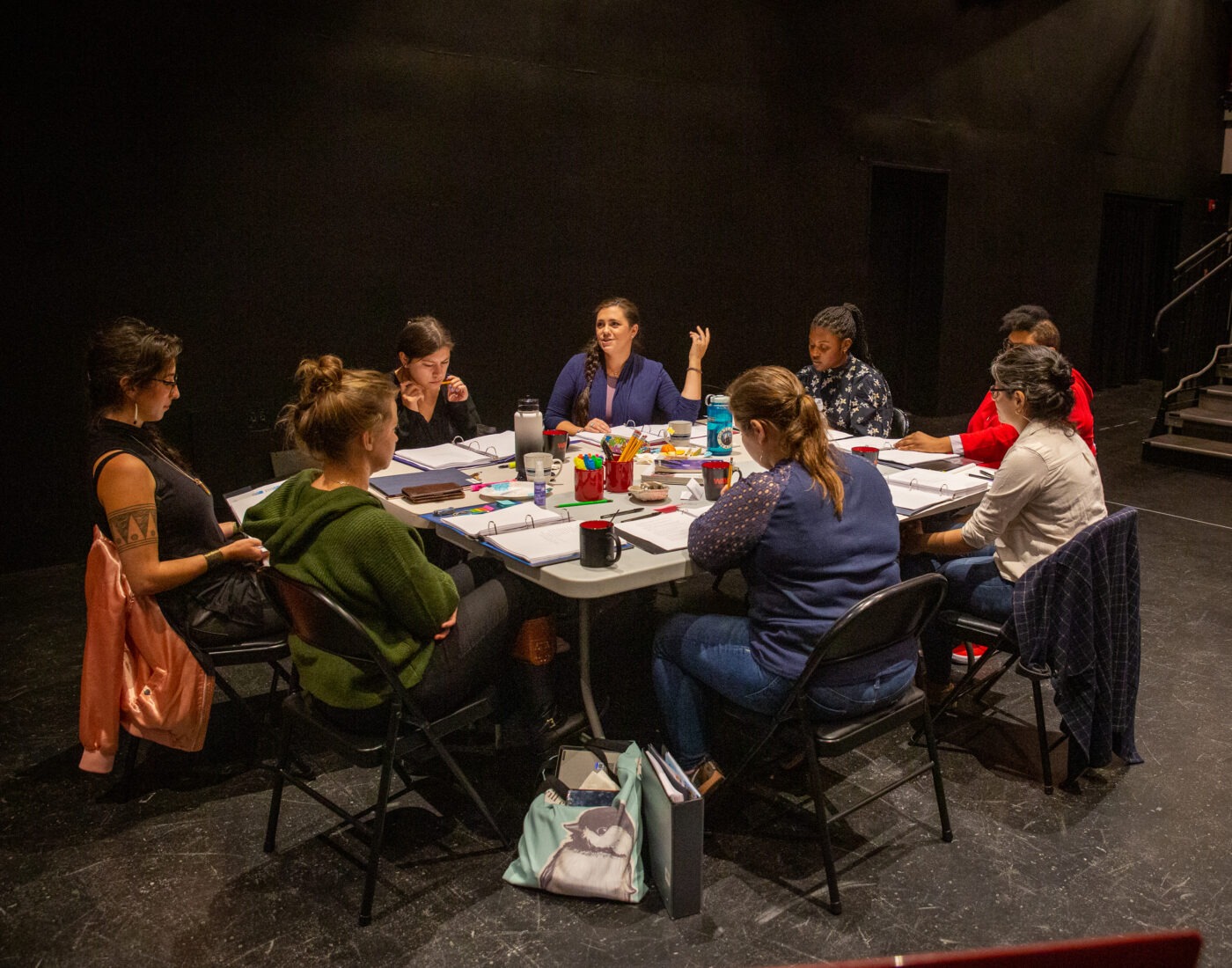by Talya Kingston, WAM Associate Artistic Director
When WAM’s Producing Artistic Director Kristen van Ginhoven gave our first Indigenous land acknowledgement in 2018, in front of a packed audience at the Tina Packer Playhouse, she was nervous. After consultation with the Stockbridge-Munsee Band of the Mohicans (the traditional stewards of the land where we are based), and conversation amongst the WAM Team, we were 90% sure that it was the right thing to do. Our reservations hinged upon the performative nature of a white, non-Native Artistic Director saying these words, and how our largely white audience would receive this new addition to the curtain speech. So from that moment on, WAM embarked upon a journey to imbue our land acknowledgment with action steps from local tribal Nations, produce plays on our stages written by Indigenous playwrights, and find responsible ways to invite our community into the story with us.
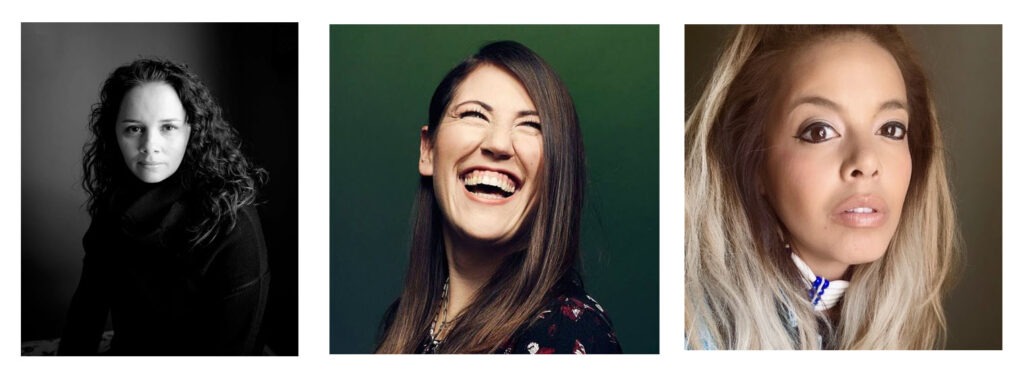
The first play that WAM produced by an Indigenous playwright was our November 2020 online production of The Thanksgiving Play by Larissa FastHorse (Sicangu Lakota Nation). In The Thanksgiving Play, four white teaching artists scramble to devise a grade school play that celebrates both Thanksgiving and Native American Heritage Month.
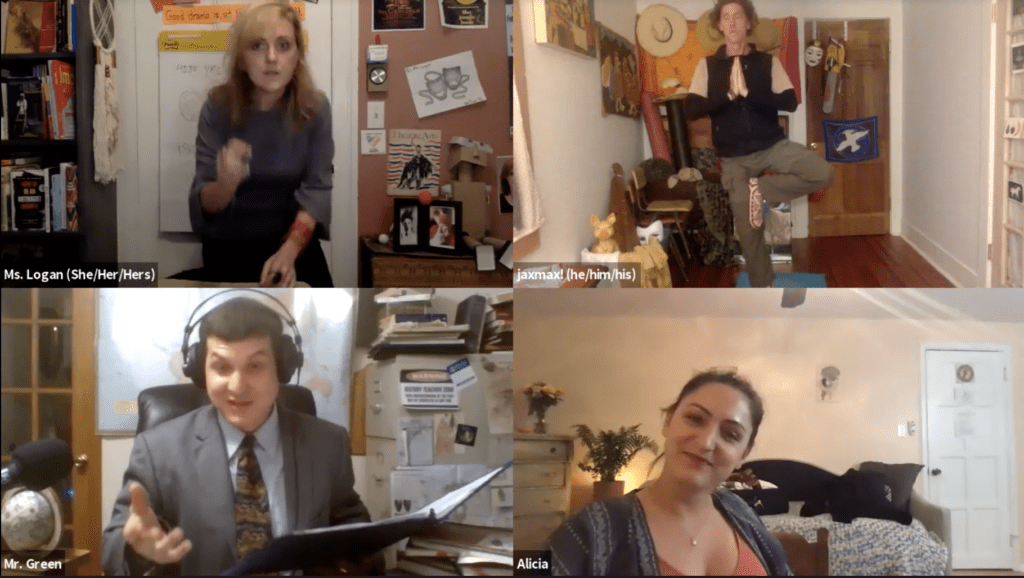
The cast of WAM Theatre’s digital production of The Thanksgiving Play: Molly Parker Myers, Tom Truss, Rylan Morsbach, and Carissa Degenais.
Satire is a dangerous weapon as it can be easily misinterpreted, and it points a finger at the people on stage and in the audience. In an interview with The Interval, Larissa FastHorse stated her hope that her play gave predominantly white American theatres an opening into conversation about disturbing subjects such as the history of “red face” and in doing so gently transformed their perspective: “let’s just all make the mistake together, let’s all be ridiculous together, and then that gives us somewhere to go.”
As a first step into presenting Indigenous plays, it allowed our audiences of majority non-Native people to locate themselves in the picture of contemporary Indigenous culture rather than passively watching from behind a proscenium. The Thanksgiving Play brilliantly satirizes the very nervousness that the WAM team felt in approaching Indigenous storytelling, along with some of the common missteps that non-Indigenous “woke” artists-educators make, allowing us to learn through laughter.
While the cast of The Thanksgiving Play is intentionally all white-presenting, the production allowed us to begin to form relationships and establish trust with Indigenous artists, community members, and groups. We commissioned artist Katari Wilson (also of the Sicangu Lakota Nation) to create the illustrations for the animated interludes, and began a thoughtful partnership with the Mohican Nation. Mohican Cultural Affairs Director Heather Breugl participated in WAM’s online panels, and was able to use the production as a way of connecting to the Berkshire cultural and educational communities and amplifying contemporary Mohican culture. Additionally, WAM donated a portion of the box office sales to the Mohican library/museum.
WAM’s production of The Thanksgiving Play came out four months after the “We See You White American Theatre” (WSYWAT) statement initially co-signed by 341 BIPOC American theatre artists including Larissa FastHorse and Madeline Sayet who wrote and performed in our next Indigenous performance (the signatories later expanded to 82,000). The term BIPOC deliberately naming Indigenous people alongside Black and People of Color. The frustrations, tokenizations and exploitations of BIPOC artists satirized in the play were echoed in the demands that we (as a part of the American Theatre industry) were called upon to address.
WAM’s next step was the Spring 2021 presentation of Woolly Mammoth Theatre’s filmed adaptation of Madeline Sayet’s Where We Belong. Shifting the perspective from the white one explored in The Thanksgiving Play, this production allowed us to delve into the personal story of a local Indigenous woman. In this play Madeline, a member of the Mohegan Nation (a neighboring tribal nation to the Mohicans), explored her identity as a contemporary Indigenous female theatre artist from the North-East and the complicated relationship that she has with her home.
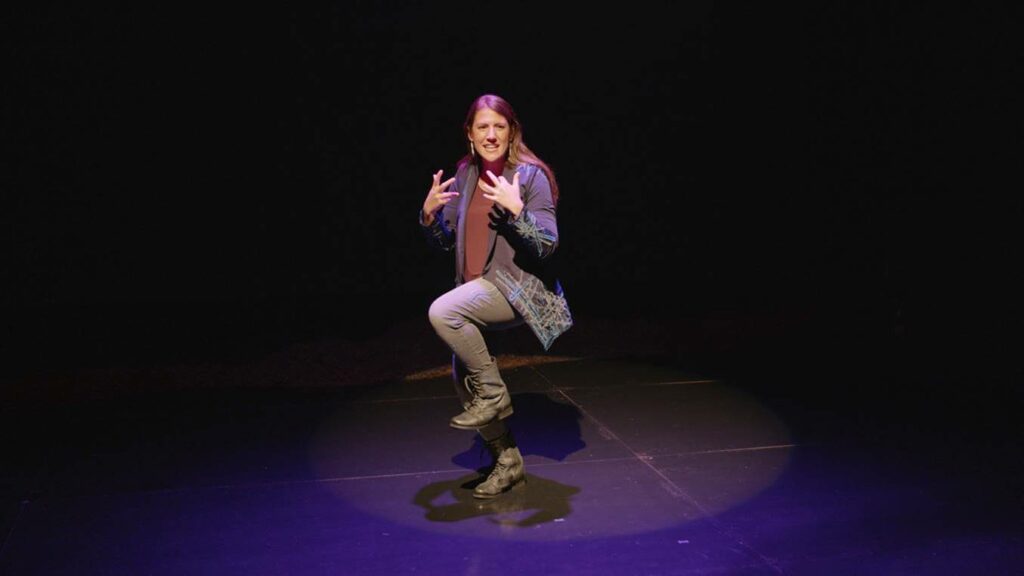
Madeline Sayet performing in Where We Belong. Photo credit Jon Burklund (Zanni Productions)
Writer/performer Madeline Sayet is someone who understands this power of stories, she says: “For my people, the Mohegans, the ways the stories are passed down is sort of an act of resistance. I grew up knowing the stories were special, because they come from the land we stand on. Both my great-aunt, Gladys Tantaquidgeon, and my mother [Melissa Tantaquidgeon Zobel] have been medicine women. I was raised with this consciousness of story medicine and the idea that stories aren’t neutral: They can heal people and they can damage people. A lot of my own work is about the transformative capacity of stories.”
In Where We Belong, Madeline brought us on her own transformative journey to Britain as a Shakespeare scholar, while deeply questioning her love of a white male storyteller and the colonial history of her adopted city of London. In doing so, she allowed us to question the stories that we tell on stage and whose stories we prioritize (one of the explicit demands of the WSYWAT statement).
Through all this time, Kristen and I had been corresponding with playwright/actor/director/theorist Kim Senklip Harvey (Syilx, and Tsilhqot’in Nations) about her play Kamloopa: An Indigenous Matriarch Story. This upcoming show will be the culmination of our 2021 Season and our first live production since Covid. Kristen and I were blown away by Kim’s humorous and unapologetically radical voice in both her play and her podcasts. Unlike our previous two shows that, while located in the present, both contain reflections on the past and critique how history has been interpreted by a white gaze, Kamloopa looks to the future. It joyfully places a company of Indigenous women front and center in the story of their own lives.
We knew that it would be a challenge for WAM to both attract and responsibly host the ensemble of Indigenous female artists necessary for us to produce Kamloopa, but we were very excited about the journey in the play and allowing our audiences to take such a fun ride after such a difficult time. Kim herself warned us that the hardest part of a predominantly white audience coming to Kamloopa was giving themselves permission to laugh. She said that while Indigenous audiences got the humor straight away, non-Native audience members entered the space with the sort of reserved reverence that can be deadly for a comedy.
Our Kamloopa Stage Manager Amanda Nita Luke (Citizen of Choctaw Nation and a descendent of the Cherokee Nation) has just completed an MFA thesis at Yale on presenting Indigenous Theatre. She shared some common Indigenous theatre practices and mistakes that predominantly-white regional theatres make in a presentation that became a guidepost for us as we prepared to host the company. We added smudging protocols, communal meals, and seating set aside for elders to our production plans. [Amanda will be sharing this presentation to area theatre professionals over Zoom on Monday October 18 as part of WAM’s Kamloopa Community Engagement].
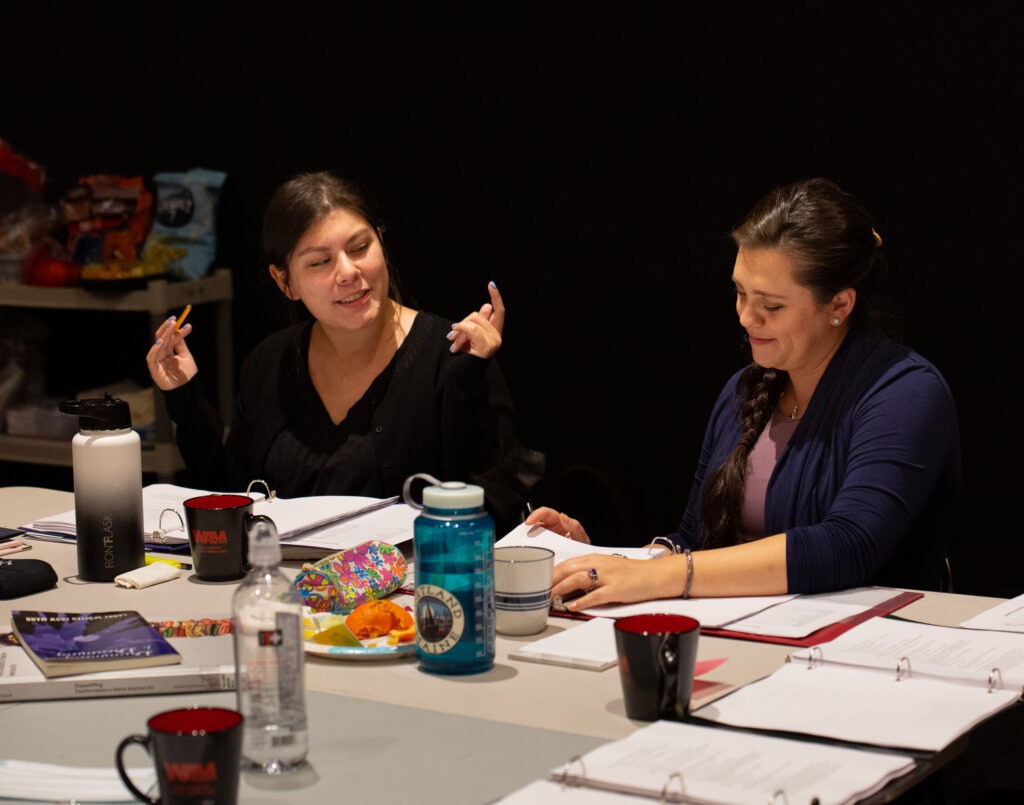
The Indigenous artists (actors, designers and stage manager) that make up the Kamloopa team represent many different tribal nations all with their own cultures and traditions. The language that you will hear in Kamloopa is n’sylixcen, an Indigenous language that very few people in the Sylix Nation even speak. Our n’sylixcen Language and Cultural Consultant Maynard McRae Jr. has been working with us from Canada on pronunciation and interpretation to enable us to represent this culture as accurately as possible. In a recent conversation with Heather Bruegl of the Mohican Nation we were considering the possibility of her speaking our land acknowledgement in Mohican language. Like n’sylixcen there are very few speakers of Mohican, however the mere fact of speaking it on their traditional ancestral land acts against its erasure.
Theatrical productions are ephemeral, only living on in the memory of those who chose to bear witness, but in that memory they have a power to shift perspectives. As Madeline Sayet says: “The stories we choose to pass down shape our collective possible futures.”
This was our road to Kamloopa, a journey that, like the play, demanded transformation, self-examination and humility. We hope that you enjoy your journey to Kamloopa, lose yourself a little in the joy and laughter, and emerge with a shifted perspective that inspires you (as it has for us) to engage with more contemporary Indigenous culture and take a closer look at the Ancestral roots of the place you live.
Tickets for Kamloopa, which will run live Oct 7-24 and stream online Nov 1-7, are available here.

